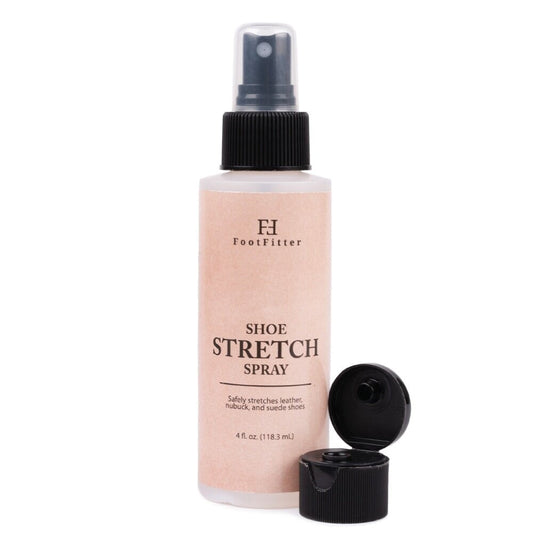
Why Does Leather Crack and Dull? Tips to Fix Your Leather Shoes
Share
While your leather shoes may have once been shiny and reliable, with constant wear they may appear dull and develop creases. With leather marketed for its durability, you’re likely questioning why does leather crack and lose its vibrance over time?
Unfortunately, the same properties that make the natural material breathable, customizable and comfortable also make it prone to creases and environmental damage.
However, FootFitter is here to stress the importance of properly caring for your leather. With the right upkeep, leather shoes can last several years in your collection.
To make things easier, we’ll break down why leather cracks and how to best prevent it from happening to your kicks.
Why does leather crack?
Leather’s unique natural texture makes it ideal for comfort and forming to your feet. On the other hand, the adaptable animal skins and hides it comes from are not always uniform or without imperfections.
Porous surface
Moreover, natural leather sources have one major fault: pores.
The main reason leather cracks and dulls is because its porous surface traps dirt and oils.
These irritants break down the dye and texture on the surface of your shoes, causing cracks and discoloration.
Velvety materials like suede and nubuck are especially porous and at the highest risk of damage.
Alternatively, smooth leathers offer a bit more protection. However, they are still considered semi-porous and may produce cracks that require regular upkeep.
Finally, some genuine leathers come with a protective coat more similar to a synthetic style. This additional outer layer deters dirt and oils better than other styles of leather while not skimping on quality.
A lack of moisture
Dirt and oils are troublesome to the appearance of your leather. However, a lack of moisture is another devious culprit when it comes to leather cracks.
Your leather easily dries out when exposed to dry environments or when stored in areas that don’t meet the proper humidity requirements.
It’s best to keep your leather shoes in a room that has at least 40 percent humidity in the air to avoid cracks. If this does not occur naturally, it can be achieved by using a humidifier in your home.
When leather is kept in a dry environment for too long, it sucks the moisture from the surface of your leather. What starts out as creases, quickly turn to cracks that burst open.
In addition to being uncomfortable, this can cause damage to your feet. In dress shoes, this may mean diminished protection from objects falling on your feet, while damaged leather sandals can cause cracked heels.
How to repair and care for leather
Now that we’ve answered “why does leather crack and dull”, it’s important to go over how to fix and avoid it. With varying textures, different styles of leather need separate care routines.
Smooth leathers

When it comes to caring for your smooth leathers, having a trusted shoe polish on hand helps your shoes bounce back from scuffs and cracks.
To get the best results, brush your shoes to dislodge irritants before beginning the conditioning process. Then, buff in a shoe polish with a microfiber cloth.
In addition to being gentle on your leather, microfiber will cling to any leftover or unseen irritants to make sure you get the best clean and moisture from the process.
Suede and nubuck

On the other hand, velvety leathers like suede and nubuck do not respond well to conditioners.
Their soft texture is too absorbent for polishes and using the wrong products on their surface can cause additional cracks and damage.
To reduce naps and imperfections in your suede, try a tool with nylon and brass bristles or an eraser function versus horsehair bristles.
While less sturdy, these materials will clean suede and nubuck and dissolve cracks without damaging its surface.
Final thoughts
While leather is prone to the occasional scuff or crack, restoring its luster is easy with the proper tips and tools in hand.
Now that you understand why leather cracks and how to fix it, your leather shoes should perfectly complement your outfits for at least the next few years.










